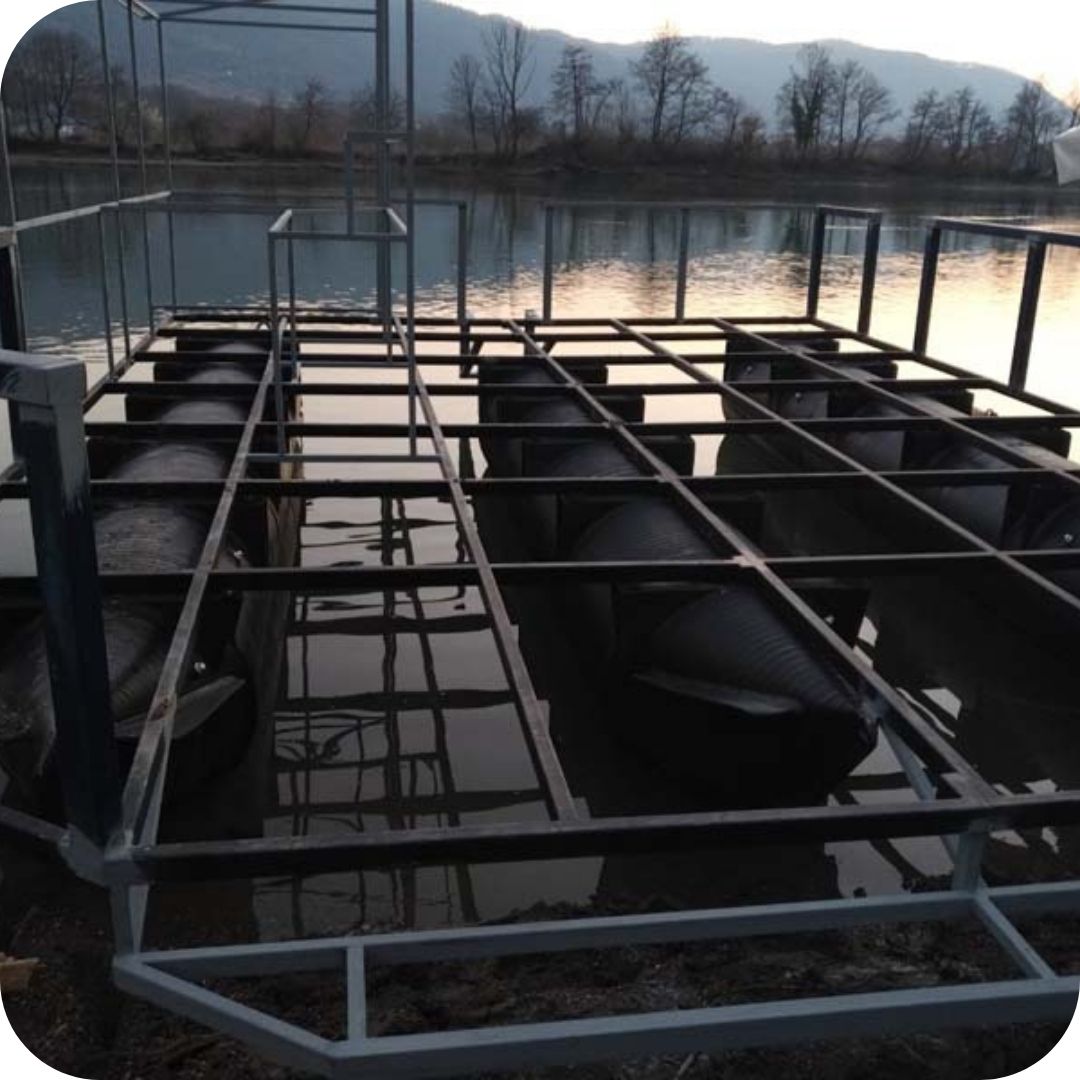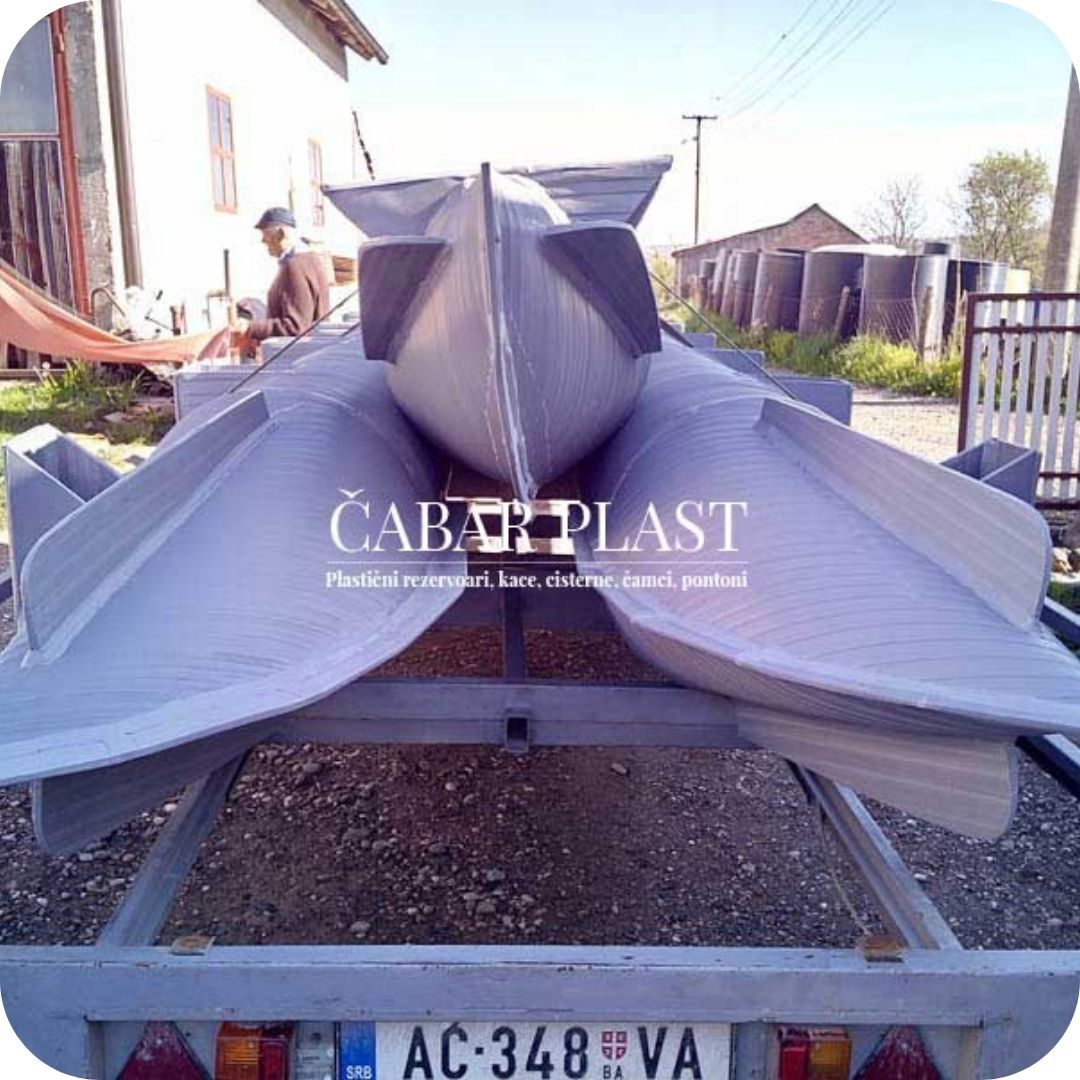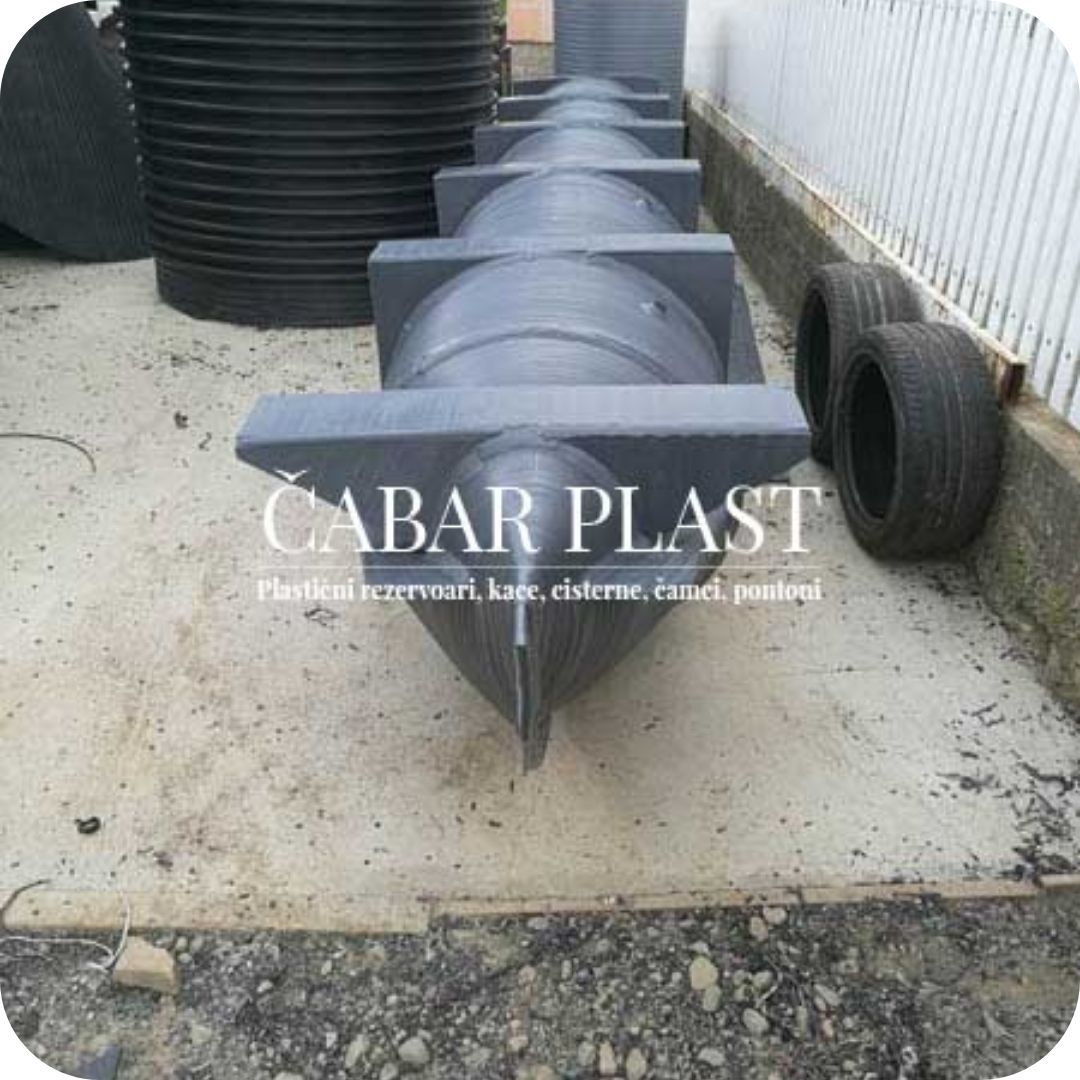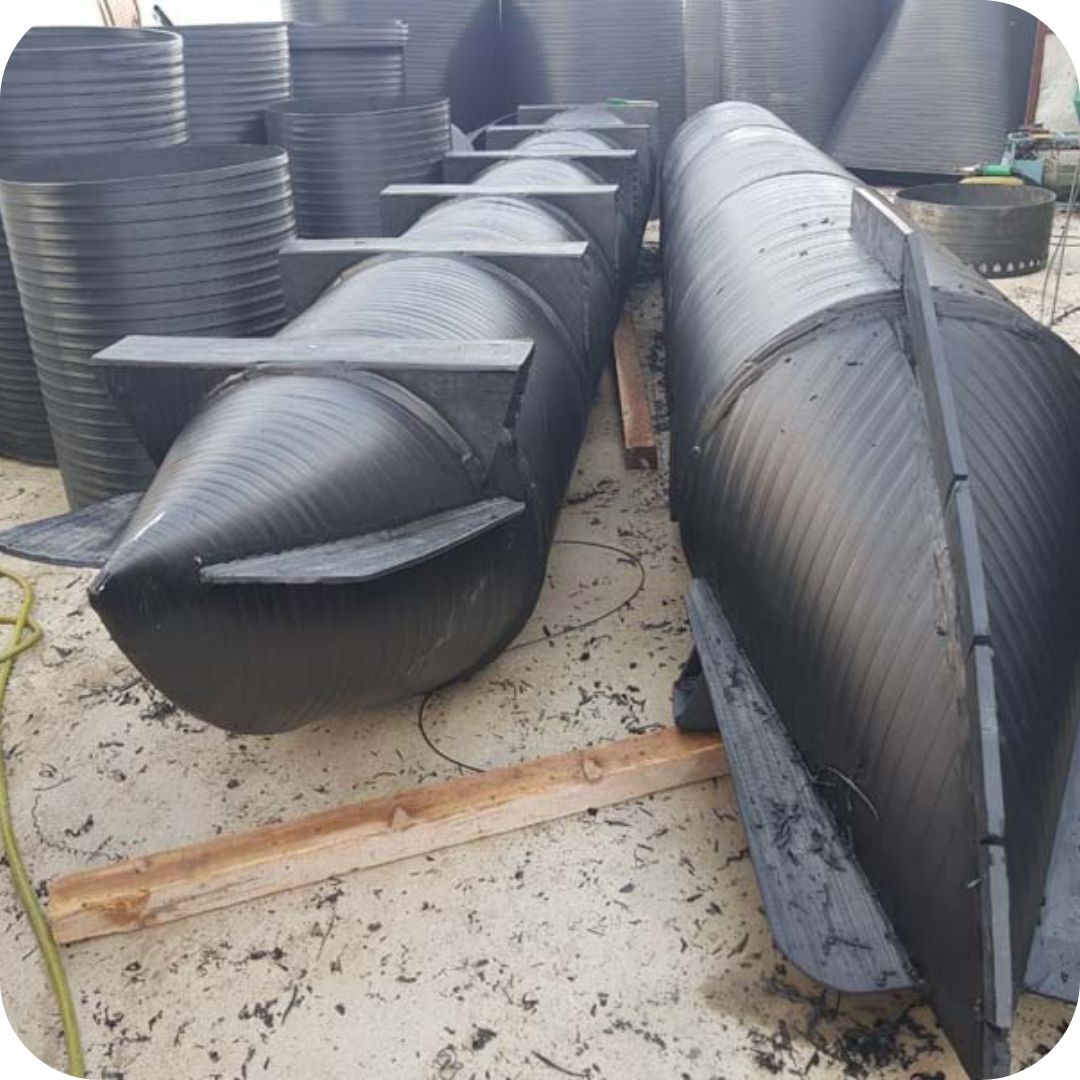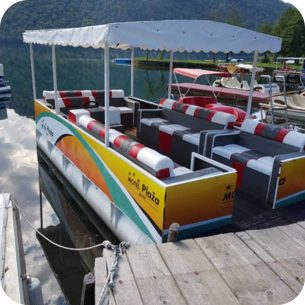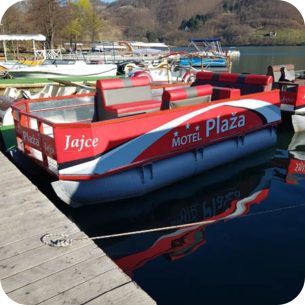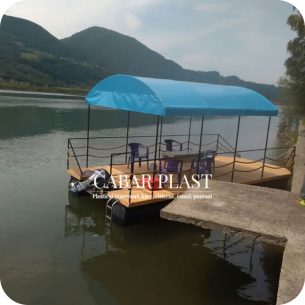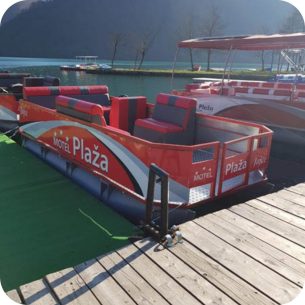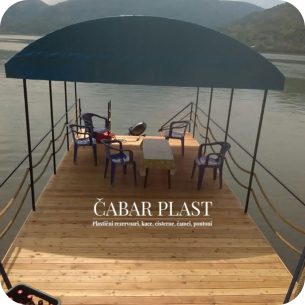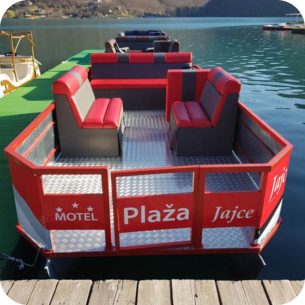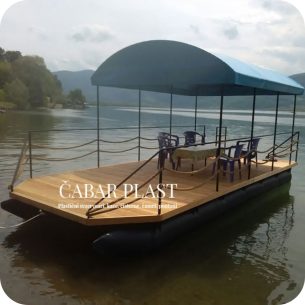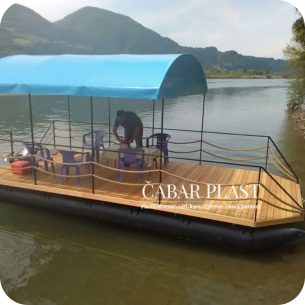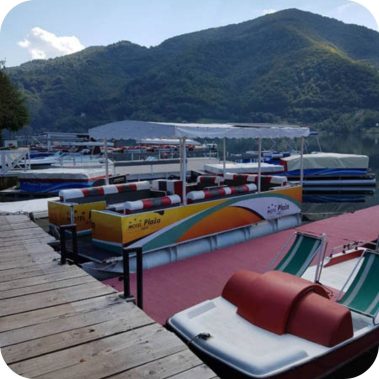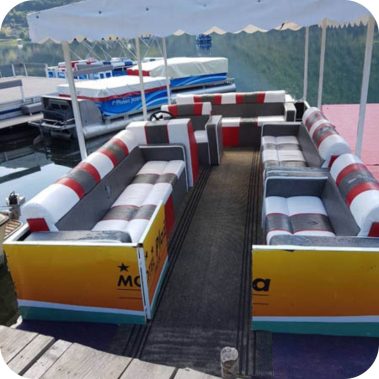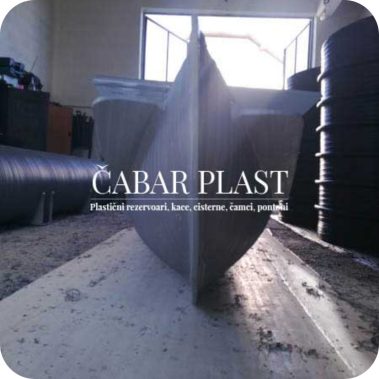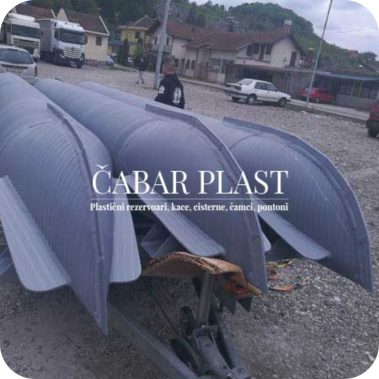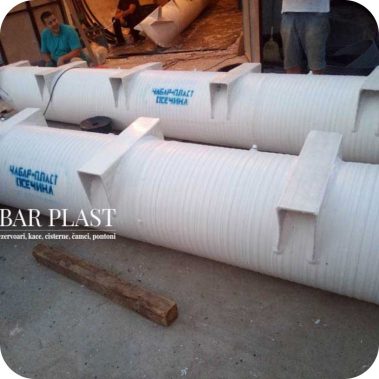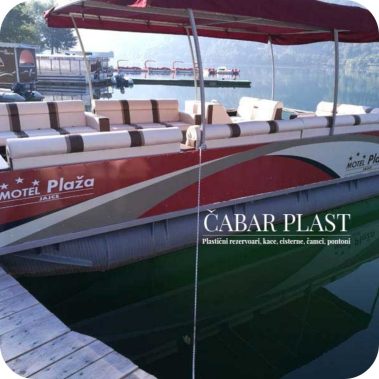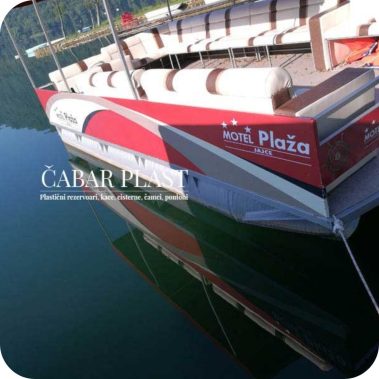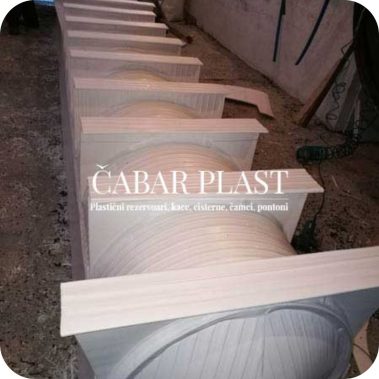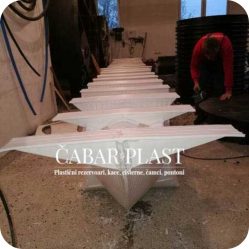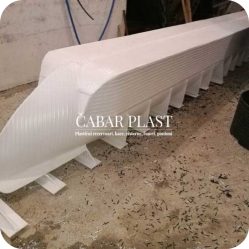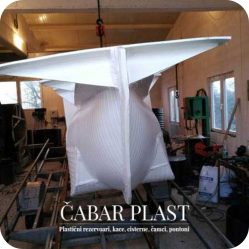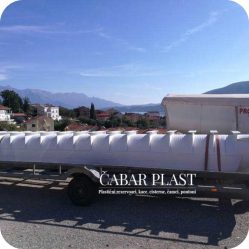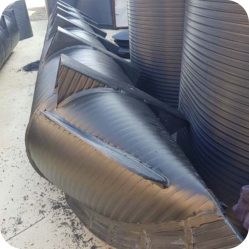Kako izračunati nosivost katamarana, splava bilo kog plovnog objekta?
Prvo moramo znati nosivost pontona. Čabar plast pontoni unutrašnjeg prečnika 60 cm ima nosivost 140 kg po dužnom metru, što znači da npr. ponton od 6 m dužine ima nosivost od 6×140=840 kg
Ponton unutrašnjeg prečnika 80 cm ima nosivost 230 kg po dužnom metru, što znači da ponton od 6 m dužine ima nosivost od 6×230=1380 kg
Čabar plast pontoni su projektovani da pri maksimalnoj opterećenosti katamarana ili bilo kog drugog plovnog objekta, ponton bude do polovine uronjen u vodu. Zbog toga je neophodno da znate kolika će biti masa splava, katamarana ili drugog plivajućeg objekta kada je on maksimalno opterećen, dakle treba sabrati mase čelične konstrukcije, drvene građe, kućice, ostalog tereta i maksimalnog broja ljudi koji će se u jednom trenutku naći na splavu.
Čabar plast pontoni su laki za transport, lako se postavljaju i instaliraju, mogu da nose terete velike nosivosti.
Katamaran koji se sastoji od tri umesto dva trupa se zove trimaran, on se sastoji od jednog centralnog trupa i dva spoljna trupa.
Naša firma sa višegodišnjim iskustvom prateći promene na tržištu i zahteve naših potrošača proizvodi po najpovoljnijim cenama najsavremenije katamane, trimane, splavove, pontone sve u cilju zadovoljenja potreba naših klijenata.







